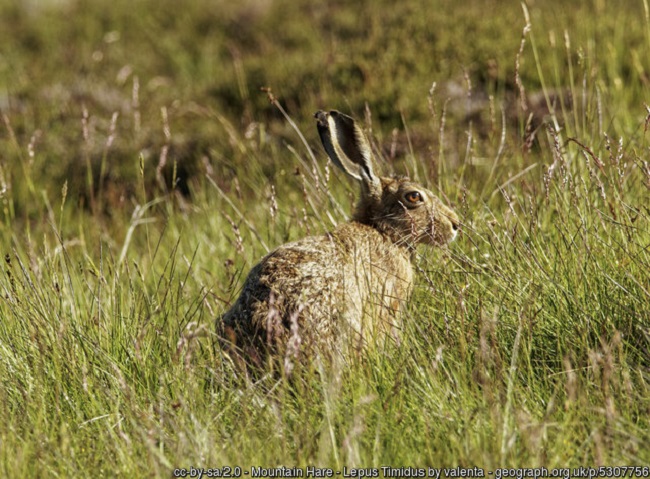Scottish Mountain Hare in serious decline

A new study conducted jointly by the Centre for Ecology & Hydrology and the RSPB has highlighted a serious decline in Scotland’s Mountain Hare population, with numbers suspected to have fallen to less than 1% of the level recorded just 60 years ago.
From 1954 to 1999, it is estimated that hare numbers decreased by almost 5% per annum, with declines worsening to almost 30% annually between 1999 and 2017. The study also found that population declines were more pronounced on managed, moorland sites as opposed to alpine locations – highlighting the loss of open habitat to conifer plantation as one reason for the long-term negative trend. However, it is also thought that an increase in culling on moorlands managed for grouse shooting is responsible for the more severe declines observed over recent years.
Dr Adam Watson, of the Centre for Ecology & Hydrology, who was lead author of the work, comments: "Having reached the age of 88 I am both delighted and relieved to see this paper published in the Journal of Applied Ecology. Having counted mountain hares across the moors and high tops of the eastern Highlands since 1943, I find the decline in numbers of these beautiful animals both compelling and of great concern. We need the Scottish Government and Scottish Natural Heritage to take action to help these iconic mammals of the hill - I hope they will listen to the voice of scientific research"
Duncan Orr Ewing, Head of Species and Land Management at RSPB Scotland said: “The mountain hare is a keystone native species of the Scottish uplands. This authoritative research suggests that we should be very concerned about its population status in its former strongholds. We consider that large-scale population reduction culls are both illegal under EU law and unwarranted as a method for controlling grouse disease.
“Management of this species should now be more tightly controlled by Scottish Natural Heritage to safeguard mountain hare populations. We expect this subject to be given thorough consideration by the current independent grouse moor enquiry, which is looking at how grouse moors can be managed sustainably and within the law.”
Scottish Natural Heritage Head of Policy, Eileen Stuart, said, “The report of such a substantial long-term decline in mountain hares in the north-east of Scotland is a great concern.
“That’s why members of our Scientific Advisory Committee and Expert Panel are working with us in assessing this important new information, alongside other recently published data. This will allow us to advise Scottish Government on the mountain hare population status before the end of the month.
“We continue to urge estates to refrain from large-scale culls, as advised in partnership with Scottish Land and Estates and the Game and Wildlife Conservation Trust. The surveillance scheme we are starting this winter will give us a better understanding of the distribution and abundance of mountain hares across Scotland.”
You can read the scientific paper in full here


